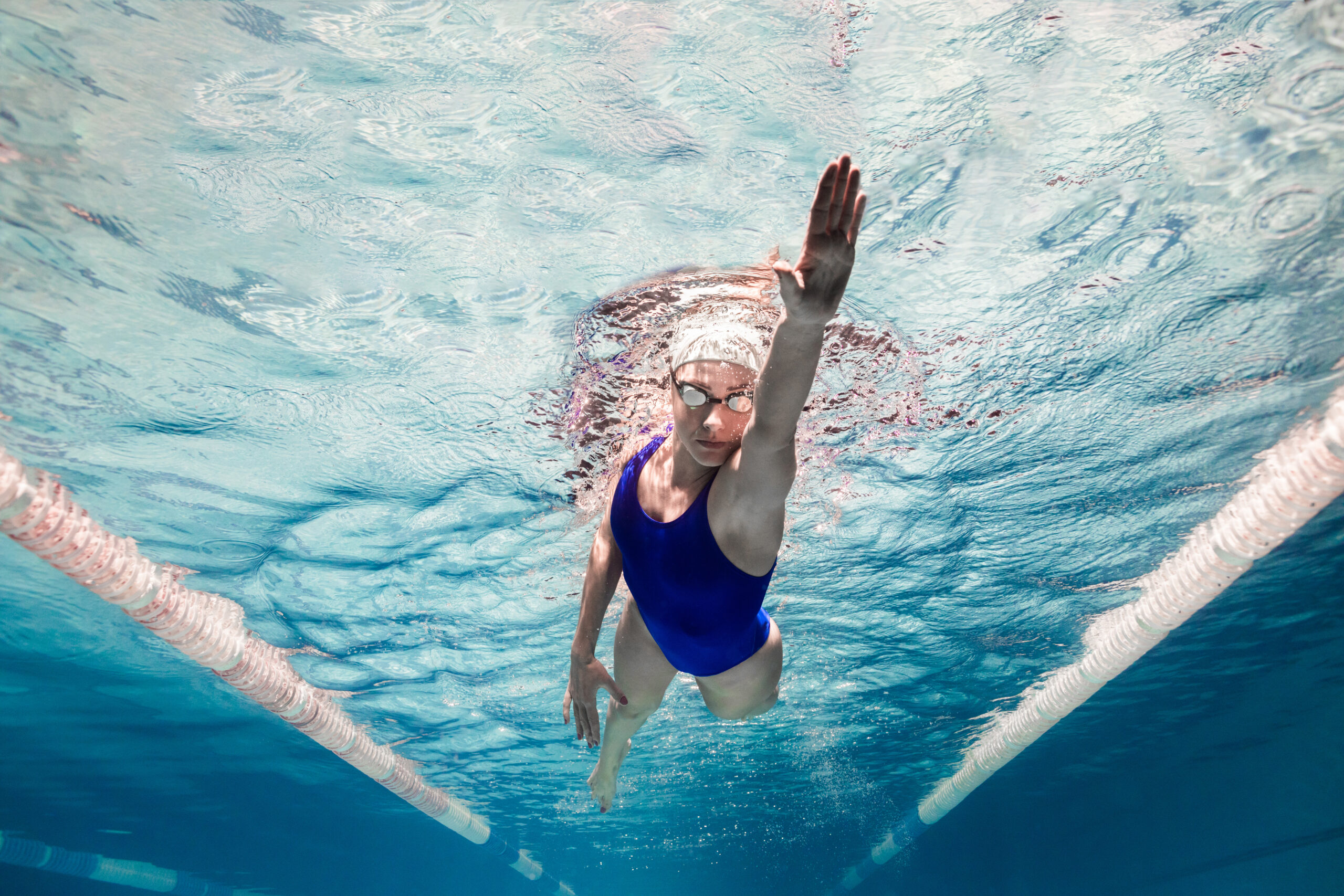Finding an enjoyable way to get active sometimes becomes trickier as we age. High impact exercise such as running can put too much stress on the joints. For many older adults, swimming provides a lower impact option, allowing them to build up aerobic fitness, improve their mental health and soothe their aching joints.
The hardest part of any activity program is getting started. Finding a group-based program can help the most reluctant swimmer dip their toe in the water, get more active and, even better, have fun while doing it.
Tom Picton-Warlow, who ran a group-based swimming program for the best part of a decade, says swimming with a group means that there’s room for a range of ages and abilities, which can take the pressure off newbies.
“If you can only swim for 20 minutes or 15 minutes, that’s fine,” Tom says. “You can start there and build up. For a lot of participants the thought of even swimming 500 metres is quite daunting. The main thing is that you’re actually doing the exercise and making the effort.”
Tom says one thing that stops older people from getting more active is the fear of embarrassing or, worse, injuring themselves in the attempt.
“Swimming is low, low impact. You just need to be able to stay afloat. The water holds you and you’re just sort of exercising against your own resistance. The basic equipment is fins and goggles, although some of the new beginners wear a snorkel.”
Although there’s no required level of skill to get started, Tom says it doesn’t take long for swimmers to feel their health and ability levels improving. Within a year of his program starting back in 2016, the group fielded two teams for the Port to Pub Rottnest swim – an astonishing achievement for a bunch of beginners.
“It’s been a game changer for me. I can happily say that if I don’t swim, then it makes managing my diabetes pretty hard.”
While anyone can benefit from taking up swimming, there are clear advantages for people living with diabetes. Rae Foale, who lives with type 2, says she was drawn off the couch when the group started up, despite feeling that exercise wasn’t really for her.
“I started swimming because I was basically in the situation where I probably couldn’t do anything else,” Rae says. “But soon we all thought we were, you know, elite athletes because we were swimming three times a week, two kilometres at a time. It was amazing.”
It didn’t take long to see the difference swimming made to Rae’s diabetes management. Fellow swimmer Peter Michael says he’s seen a similar impact time and time again.
“When someone swims and they do, say, between one and two kilometres, they see an immediate effect,” Peter says. “It’s a great encouragement when you finish a swim and you look at your blood sugar levels, and they’re down maybe 10, 15, or 20%. Over time, you know, if they stick it out, the results are just fantastic.”
Rae says starting to get active was a catalyst to make other changes that also helped with her diabetes management.
“It’s been a game changer for me. I can happily say that if I don’t swim, then it makes managing it pretty hard.”
Getting active has made her realise what else might be possible, she says.
“When you’re doing these exercises, you don’t suddenly lose your appetite or anything, but what it does is sort of enable you to feel more disciplined about your food choices, your life choices, and that sort of thing. It’s a whole kind of mindset change.”
“Swimming is something you can work towards, within your own capabilities.”
Being part of a swimming group has other benefits. One of the reasons Rae and Peter have kept up with the swimming is that it provides some much-needed socialisation – something that becomes more important (and harder to come by) as we get older.
“It’s a great bit of camaraderie when we hit the pool at eight o’clock on Sunday morning with a little bit of a dusty hangover,” Peter says. “It’s always good to have a bit of a chinwag and a laugh. And then everyone jumps in and punches out what they need to do. The encouragement that everyone gives everyone else is fantastic.”
Right now, the group is a mix of expert swimmers and absolute beginners.
“It really is all ages and all abilities,” Peter says. “We’ve had people in their late 80s and we’ve had 12-year-olds, 25-year-olds, people in their early 30s.”
Tom encourages anyone who might be exercise-curious to give the pool a go.
“Swimming is something you can work towards, within your own capabilities. And, yes, swimming can be a catalyst that leads to all sorts of other potential changes in diet and so on. It’s not the only thing but it’s the catalyst that enables the change to happen.”
If you’re interested in trying out swimming, find a swimming club near you here.





